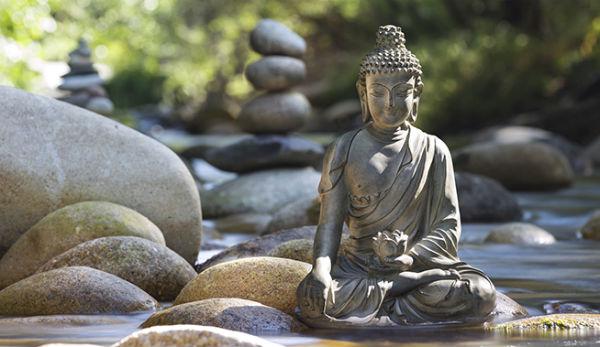Today you will learn which other components make up the so-called eight-part yoga path.
When speaking of yoga in the western world, everyone immediately thinks of flexibility, flexibility, physical exercise and gentle training. Yoga consists of so much more than “just” asanas, as the exercises and positions are called.
It was the Indian scholar Patanjali who, in the form of the so-called yoga sutra, created an eight-membered guide which was to act not only on a physical but also on a spiritual level and lead to bliss.
It is not only about a smooth body, strength and balance, but also about the inner posture. Here are the eight pillars that Patanjali has written down for it:
1. Yamas – Dealing with one’s own environment: Values such as non-violence, truthfulness, non-stealing, moderation and non-horting play a role here.
2. Niyamas – Dealing with oneself: purity, satisfaction, self-discipline, self-reflection and confidence in a higher power. The Yamas and Niyamas are thus a kind of code of conduct.
3. Asana – how to deal with one’s own body: physical exercises, as we know them as “yoga”, which are ultimately taught by v. a. to prepare for the meditation postures and to prepare for the further steps (v. a. 6 to 8) are important.
4. Pranayama – The handling and control of one’s own breath: Breath is life energy. By means of special breathing exercises, the breath and thus the energy (Prana) can be controlled and steered.
5. Pratyahara – Withdrawal of the senses: Withdrawal of the senses serves in particular as preparation for the concentration exercises.
6. Dharana – Concentration of the mind: the most important exercise in the different yoga meditation techniques.
7. Dhyana – Meditation.
8. Samadhi – state of inner freedom and bliss.
Yoga as a holistic approach is therefore more than just practicing asanas; the other components of this integral approach are also considered just as important in order to make the positive effects of yoga possible and to keep fit and healthy physically, mentally and emotionally.
Yoga is not only about becoming more powerful, enduring, flexible, supple, relaxed and relaxed, leaving back pains and tensions behind you, being more concentrated, more courageous and self-confident, but also about getting to know your own needs and yourself better, accepting and loving yourself and others and simply being in harmony with yourself and the world.
Yoga for EveryBody. 44 Basic asanas for beginners. Inge Schöps.














You must be logged in to post a comment Login